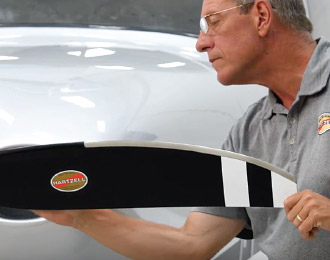
Did you know that the propeller is one of the most highly stressed components on your aircraft? During normal operation, the typical general aviation aircraft propeller will experience between 10 and 25 tons of centrifugal force! With all the forces at work on your propeller during flight, it stands to reason that the care and maintenance of your propeller should be a top priority.
One of the best ways to keep your propeller in good condition is by performing regular maintenance inspections to check for wear and damage. Along with visual inspections of your propeller, it’s important to check for proper blade tracking.
Ideally, your propeller blade tips should follow one another closely in the same plane of rotation. But if one of your propeller blades has been bumped, bent, or otherwise damaged, it will not track in the same rotational plane as the other blades.
To find out if your propeller is out of track, use this simple method:
A bent propeller blade could be caused by improper handling of the propeller itself, such as moving the airplane by pulling or pushing on the propeller. While propeller blades are made to be strong, you can cause some expensive damage by moving your airplane this way. It’s just not worth the risk—use a tow bar instead!
For more helpful propeller care and maintenance tips, check out Hartzell Propeller’s free video series.
Do you have a question for the Hartzell Propeller technical team? Complete an online contact form, call 800-942-7767, or email techsupport@hartzellprop.com.